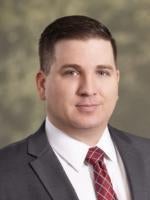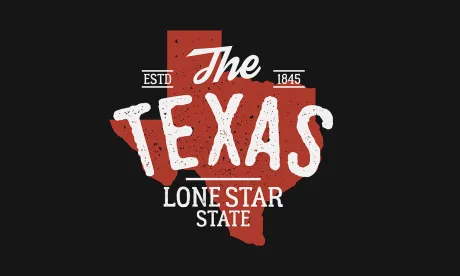On May 18, 2023, in a 5-4 decision, the Texas Court of Appeals, 14th District, sitting en banc, affirmed a jury award, including post-judgment interest, of $116 million, finding no reversible error by the trial court. In Werner Enters. v. Blake, No. 14-18-00967-CV (Tex. App. May. 18, 2023), the court refused to adopt the so-called “Admission Rule,” adopted by numerous state supreme courts and at least five Texas intermediate appellate courts. In doing so, the court allowed independent apportionment of fault to Werner Enterprises on theories of negligent training and supervision beyond the jury’s apportionment of the driver’s share of fault, despite a stipulation to respondeat superior liability at trial. Werner is expected to appeal to the Supreme Court of Texas, setting the stage for a major decision on vicarious liability and a plaintiff’s ability to use the Reptile Theory in the Lone Star State.
Background
Trey Salinas was driving a passenger vehicle with Jennifer Blake and her three minor children on eastbound Interstate 20 near Odessa, Texas, on December 30, 2014. A National Weather Service Winter Storm Warning was in effect for the area. Salinas lost control of the vehicle, which crossed the 42-foot-wide grassy median and collided with a Werner tractor-trailer traveling in the opposite direction at more than 40 miles per hour. One of the children died as a result of the collision, with Jennifer and her other two children suffering serious injuries. The Blake family sued Werner and its driver for damages resulting from the collision. Salinas was not a party to this action.
The Blake family alleged causes of action for negligence and negligent training and supervision, including a claim for gross negligence and exemplary damages against Werner. The Blake family alleged that Werner’s driver was traveling too fast for the conditions such that the speed of the tractor-trailer was a proximate cause of the damages sustained by the Blakes. The Blake family also alleged deficiencies in Werner’s training and supervision of its driver. At trial, Werner stipulated to liability for the fault of its driver under respondeat superior principles.
The jury found that Werner’s negligence acting through its employees other than its driver was a proximate cause of the injuries in question with respect to its supervising or training the driver, that Werner’s driver’s negligence was a proximate cause of the injuries in question, and that non-party Trey Salinas’s negligence was a proximate cause of the injuries in question. Judgment was entered on this verdict for an amount of $96 million, now more than $116 million due to post-judgment interest.
Majority Opinion
Werner appealed the judgment to the Texas Court of Appeals, 14th District, challenging the factual sufficiency of the jury findings, the jury instructions and the finding of negligence against Werner. In upholding the findings of fact by the jury, the Court of Appeals found that the evidence presented at trial, which included expert testimony that Werner’s driver was traveling too fast for the slick conditions and that a passenger vehicle losing control and entering the opposite direction of travel was foreseeable under the circumstances, was sufficient to support the jury’s factual findings of negligence.
The majority opinion also found that Werner had waived its claim of error in the instructions to the jury for failing to adequately brief the issue. Werner argued that the jury instructions were not sufficiently clear such that it was not possible to determine the grounds the jury relied on for their findings of negligence, thus making the factual sufficiency challenge impossible. The majority found that Werner had waived their right to challenge the jury instructions. Nonetheless, the majority found the jury instructions were appropriate.
In its most significant finding, the majority rejected the application of the so-called “Admission Rule.” Werner contended that as it had conceded respondeat superior liability, the jury was not permitted to separately consider any negligence by Werner in the training or supervision of its driver. The Admission Rule, recognized by the high courts of many states and at least five other appellate districts in Texas, states that theories of negligent training and supervision are merely legal routes other than respondeat superior to impute vicarious liability onto an employer when the employee was acting outside of the course and scope of employment.
The Admission Rule rejects the notion of negligent training, supervision and other similar theories as independent claims against the employer, and states they are derivative of the employee’s negligence. Under the Admission Rule, when the employer admits that the employee was in the course and scope of employment at the time of an allegedly negligent act, evidence of an employer’s hiring, training or supervision practices becomes inadmissible as irrelevant and likely to prejudice the jury because vicarious liability already has been established. Typically, an exception is recognized when the plaintiff seeks punitive or exemplary damages against the employer for a pattern of negligent conduct.
Here, the majority refused to apply the Admission Rule. The majority reasoned that the Admission Rule had not been recognized previously by the 14th District and that even if the Admission Rule were recognized, the plaintiffs adequately sought exemplary damages such that the typical exception to the Admission Rule would apply. In affirming the jury’s separate allocation of responsibility to Werner beyond the responsibility of its driver, the majority functionally recognized negligent training and supervision as separate causes of action against the employer independent of direct negligence by an employee.
Dissenting Opinions
Two dissents to the majority opinion were published. The first, authored by the Chief Justice and joined in part by each of the remaining three dissenting justices, discussed issues related primarily to the jury instructions and the adequacy of Werner’s brief on appeal of those issues.
The first dissent faults the trial court for instructing the jury only on an unspecified general duty of ordinary care as to Werner, and disagrees procedurally with the majority’s position that Werner waived the jury instruction issues. Supreme Court of Texas precedent requires that charges of duty to an employer must be more specific than merely to exercise ordinary care in all circumstances. See Pagayon v. Exxon Mobil Corp., 536 S.W.3d 499 (Tex. 2017). The jury was not instructed, and no evidence was presented, on what specific duty Werner owed to third parties such as the Blakes, and so it is impossible to tell on what grounds the jury found negligence. The Chief Justice would overrule the verdict, as it was based at least in part on the offending instruction, and remand for a new trial, or for plaintiffs to move for alternative relief on a different favorable finding.
The second dissent, representing three of the four dissenting justices, expressly advocated for the adoption of the Admission Rule by the 14th District. Justice Wilson noted that derivative theories of liability for negligent training or supervision are simply methods to impute liability onto the employer, not independent theories of negligence for which specific duties are owed to the public. Allowing the derivative theories, such as negligence training or supervision, to proceed after vicarious liability has been admitted functionally allows a jury to assess a principal’s liability twice. Justice Wilson pointed out that the duplicative effect avoided by the Admission Rule is plainly apparent in this case; when not considering negligence by Werner, the jury only apportioned 45% fault to Werner’s driver. When considering Werner’s independent fault alongside the fault of its driver, Werner’s liability jumped to 84%, functionally making Werner liable for 100% of the accident under Texas comparative fault and contribution rules.
Justice Wilson further disagreed with the majority’s position that even if the Admissions Rule applied, an exception exists for gross negligence and exemplary damages that would apply and preclude the Admission Rule. Justice Wilson would hold that the evidence presented at trial was legally insufficient to support a charge of gross negligence, and should not have been presented to the jury. In any case, the jury did not find gross negligence on the part of Werner. Justice Wilson felt the majority construed the exemplary damages exception far too liberally such that the Admission Rule could be nullified by merely pleading gross negligence and then offering no evidence to support such a charge.
Justice Wilson would have the 14th District adopt the Admission Rule, reverse the judgment of the trial court and enter judgment that the Blakes take nothing on their derivative theories of liability, and remand for a new trial.
Takeaway
Werner is expected to appeal to the Supreme Court of Texas. The appeal carries potentially massive implications on vicarious liability in the nation’s second most populous state.
If the Texas Supreme Court adopts the Admission Rule as the law across Texas, employers would be able to avoid presentation to the jury of potentially prejudicial evidence of hiring, training or supervision practices when vicarious liability is not in dispute.
If the Supreme Court rejects the Admission Rule, or even adopts the majority’s extremely broad application of the exemplary damages exception, plaintiffs will be free to air employers’ internal practices to juries and essentially allow Texas juries to apportion twice to employers fault for any negligence. Such a ruling would likely have effects similar to this case, with juries placing substantial additional fault on employers for any perceived negligence beyond the direct negligence of the employee in nearly all cases, and open the floodgates for plaintiffs to use Reptile Theory trial strategies.





 />i
/>i

